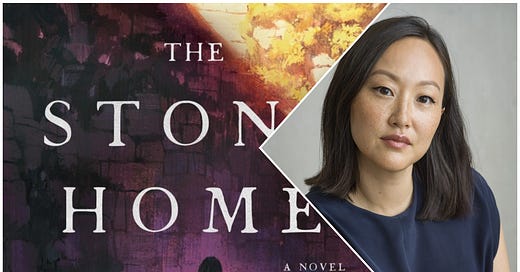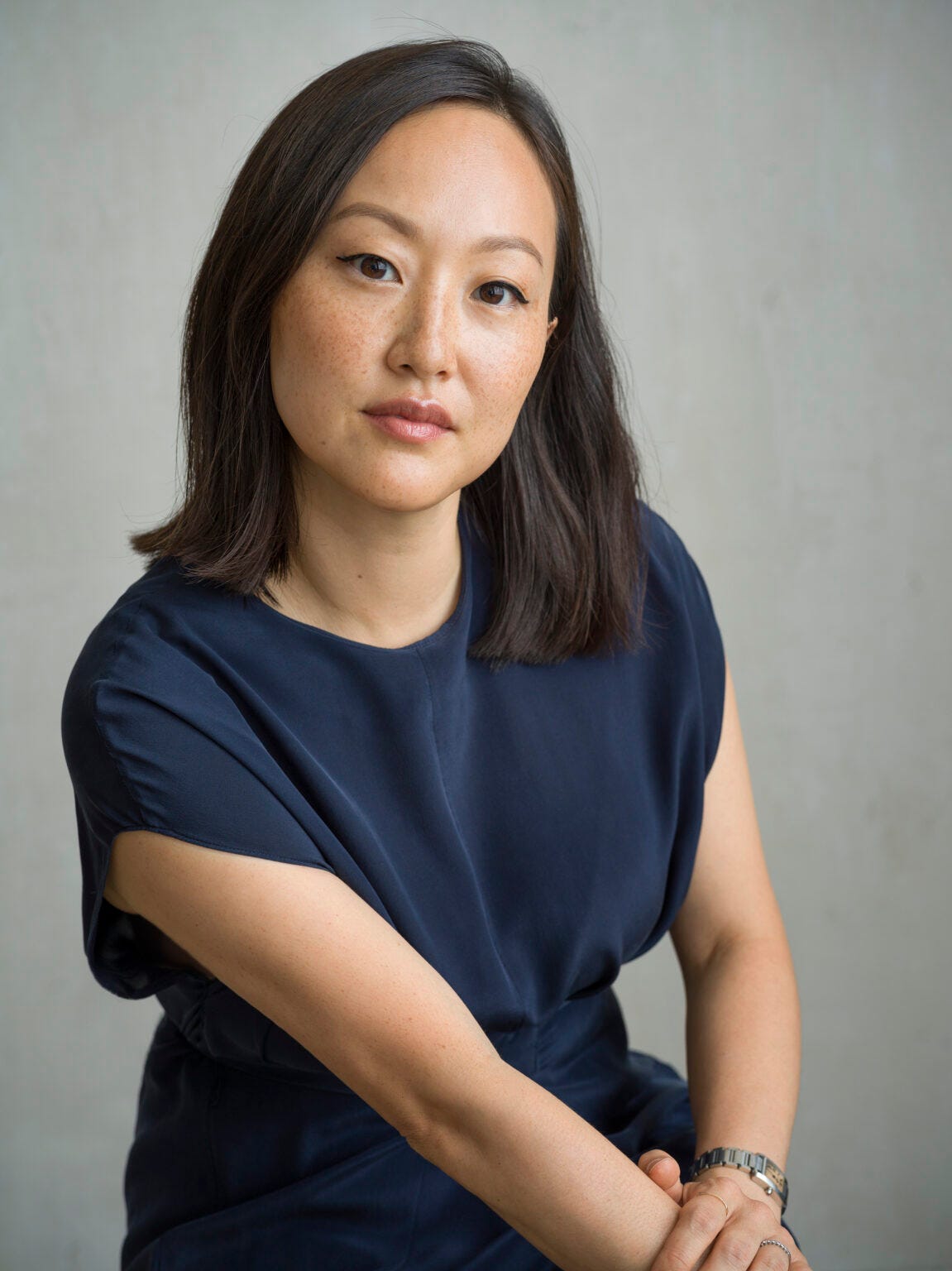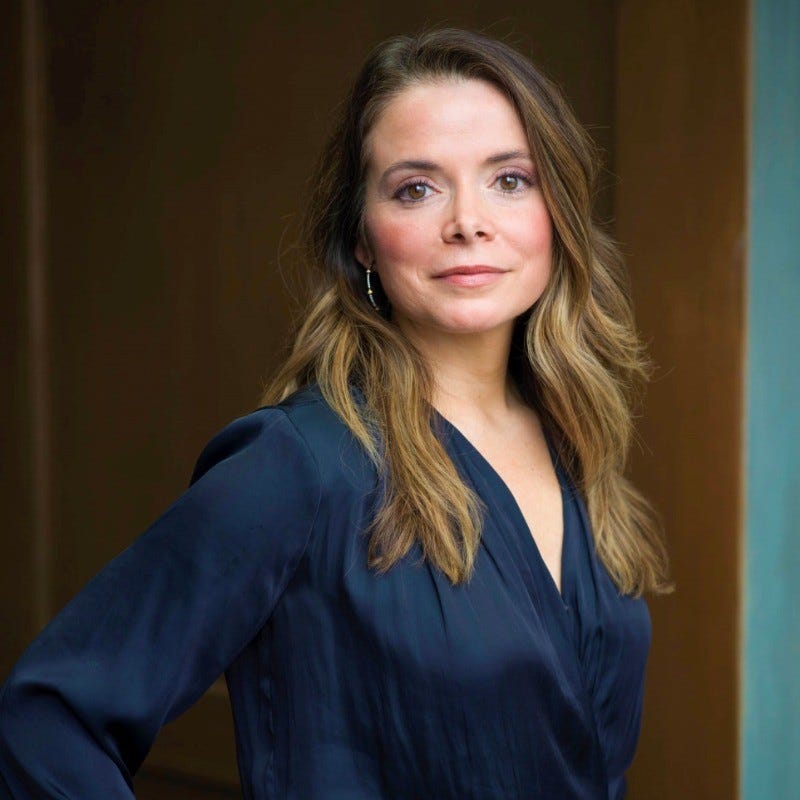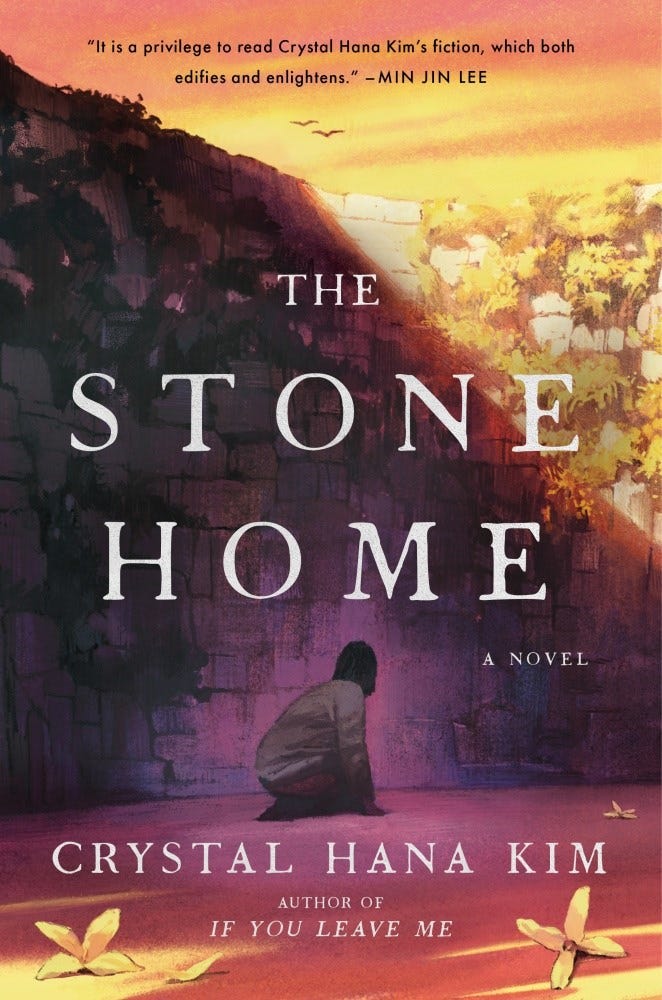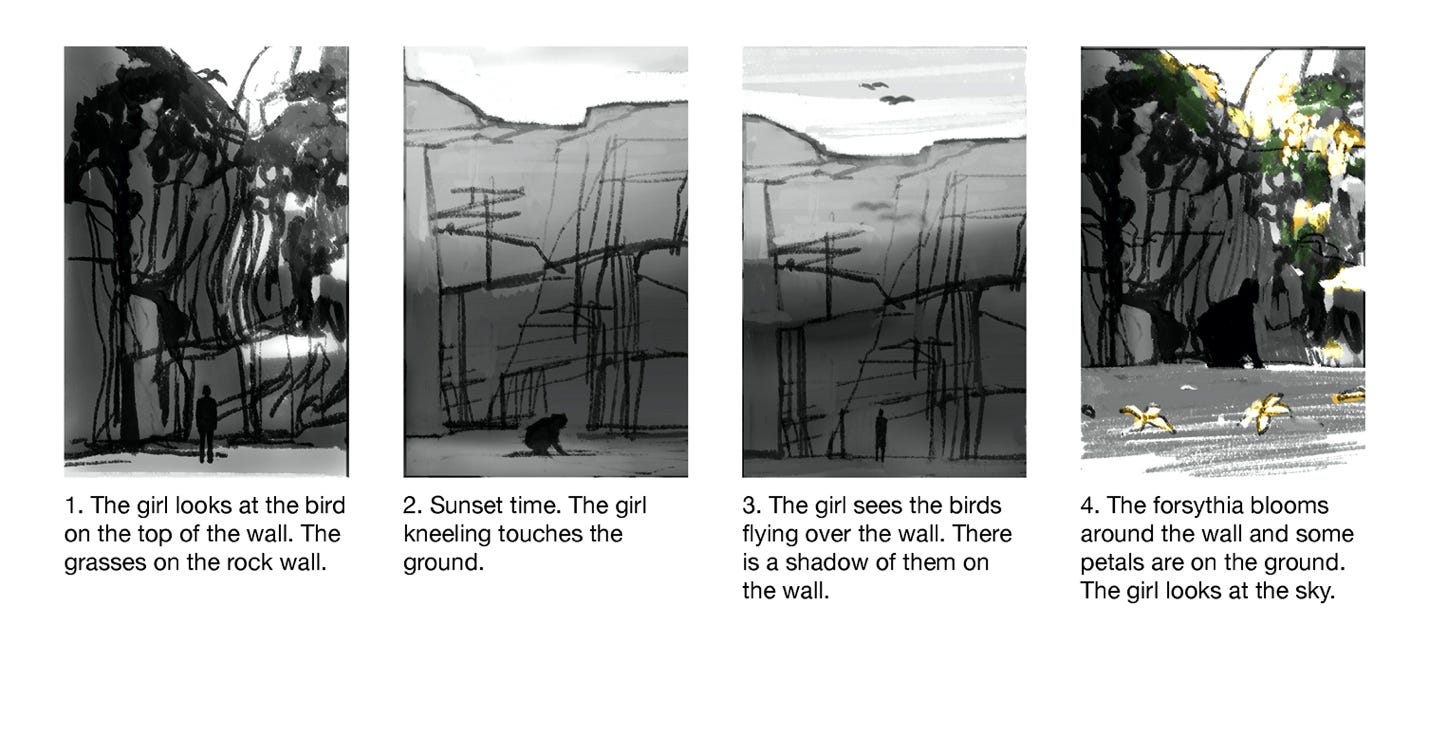Behind the book: When reading the news inspires a novel
"I believe we can learn from our past." Crystal Hana Kim on the AP story behind THE STONE HOME and writing fiction that explores a dark secret in history.
Last fall, when I was rummaging through Edelweiss for forthcoming books, I was struck by the cover of The Stone Home, Crystal Hana Kim’s second novel on the heels of 2018’s If You Leave Me: A figure crouches at the bottom of what appears to be a stone-block well, where flowering plants climb up the masonry while birds soar across a sunset above.
At first, I thought it was a fantasy novel. “How did this heroine fall into an ancient well, and how will she get out?” I wondered. But then I read the blurb: The Stone Home is a historical novel inspired by real-life internment camps in South Korea — and not in the distant past, but as recently as the 1980s.
The figure on the cover wasn’t a fantasy character who fell into a well — she was a South Korean woman trapped in a modern-day prison.
I read The Stone Home in a breathless two-day sprint a few weeks ago, and I couldn’t put it down. It’s a fascinating look at one of the darkest secrets in history, written in Kim’s melodic and otherworldly prose.
To understand more about how the novel came together, I spoke with Kim, her editor at William Morrow Jessica Williams, and the art director behind the cover, Ploy Siripant.
Crystal Hana Kim, author
How and when did this book begin for you? Was it inspired by history?
In some ways, the book began in 2016, when I came across an Associated Press article about “reformatory centers” in 1980s South Korea. These institutions were secretly sanctioned by the government to clean up the country’s image in the lead up to the 1988 Seoul Olympics. Children were unceremoniously taken off the streets and used for labor. After reading the exposé, I studied the accompanying photos — a boy in a blue shirt jumping off the back of a paddy wagon, a room full of girls bent over sewing machines. I couldn’t stop thinking about them.
I didn’t know I was going to write a novel right at that instant, of course. I only knew that this was a story I couldn’t get out of my head. I kept wondering about the lives of those imprisoned, the limits of our humanity, how you survive in even the most desperate circumstances. Then, in 2018, I met Han Jong Sun, a survivor of one of these institutions. After our day-long conversation, I knew that I would devote the next few years to writing this book.
What was the hardest thing about writing The Stone Home?
I thought for a long time about how best to write this novel in a way that treats the subject matter with care and respect. I’m part of the Korean diaspora, and I want to tell our stories because I believe we can learn from our past. At the same time, the survivors of these 1980s South Korean institutions are still alive now. I didn’t want to speak for them. This is where character and story comes in.
In writing The Stone Home, I added layers of fictionalization to make the institution its own physical space. I created characters that would carry us through — fierce, spiky Eunju who will go to any lengths to protect her mother and guarded, stubborn Sangchul, who is devoted to his idealistic older brother. Their friends — Jae, Taeho, Mina. Through their specific stories, I created a universal story.
How has writing this novel changed you?
This may come as a surprise, but writing this novel has taught me so much about hope, collective care, and community. Without each other, we cannot survive. Writing fiction reminds me again and again of the power of story to create empathy.
Jessica Williams, VP, Editorial Director at William Morrow
What drew you to this manuscript, and to Crystal's writing in general?
I love Crystal’s writing; the power of the images she uses, her lyricism, and character work, especially her choice to focus on ordinary people dealing with extraordinary circumstances — and I published her debut novel, If You Leave Me (2018). So, as soon as the early draft of The Stone Home landed, there was never a question in my mind about whether I’d want to publish it.
What made it a great fit for William Morrow?
We’re able to showcase a wide range of fiction on our list and, like a lot of readers, I love learning about history through a historical novel, especially when it also manages to shine a light on contemporary issues. On top of that, the ending made me cry. As an editor, I always try to listen to that powerful of an emotional response to a book.
How did the book evolve during the editing process?
Crystal and I focused a lot on pacing and character development; we wanted the novel to feel as tightly constructed as possible while still rich in texture and detail. The writing is poetic and spare, and we both felt it was important not to linger over any of the more violent scenes unnecessarily. Because while the story is a wrenching exploration of the effects of colonialism and the psychology of power, it’s also meant to be a hopeful tribute to the extraordinary acts of devotion and friendship that can arise in the darkness.
Ploy Siripant, Senior Director, Art
What did you want the cover to convey about the novel?
The Stone Home is encased by a high stone wall. The young girl at the center of the novel longs to escape and studies this stone wall, so we knew from the beginning that we wanted to feature them both on the cover. I immediately thought of the incredibly talented illustrator Hokyoung Kim to execute our vision.
We told Hokyoung we wanted the cover to be elegant, beautiful, and literary. Though it delves into a dark historical moment and difficult themes, it is about the power of human connection to find hope and community in the midst of suffering. So while we want a sense of tension, we don’t want the cover to look dark or scary.
Why was the final cover the right choice?
Hokyoung sent us these sketches and we were all immediately drawn to #4. The contrast of light and dark along with the yellow forsythia flowers evoke the feeling of hope and oppression. We took some of the elements we loved form the other sketches, like the two birds, making the wall look more man-made, and showing more of the sky. Hokyoung combined everything so beautifully with color. I added typography that was elegant yet understated to let the art shine through. The final cover perfectly captures the tone and mood of the novel, and everyone on the team loved where we landed.
Forthcoming in The Frontlist
Behind the book with Caroline Crampton (A Body Made of Glass)
May book preview


